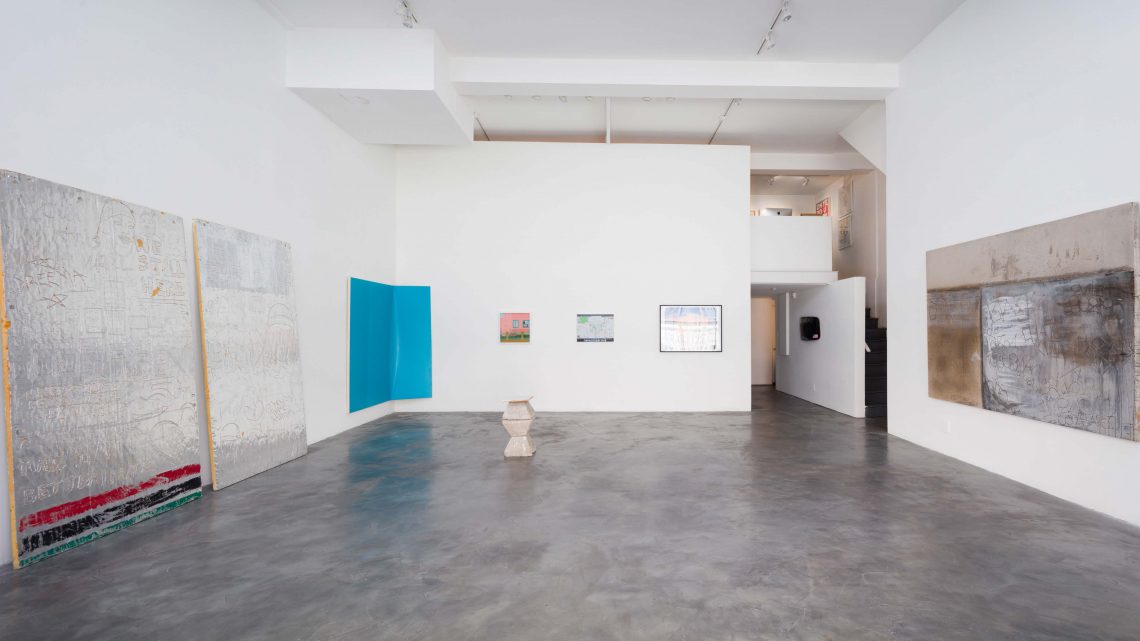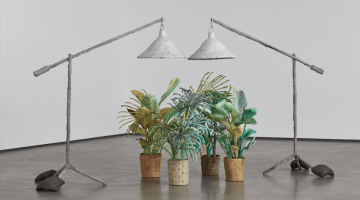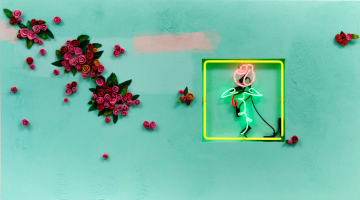Southland
Charlie James Gallery
969 Chung King Road, Los Angeles CA 90012
July 23 – August 27, 2016
Southland, the latest exhibition at Charlie James Gallery, is a collective mapping of Los Angeles. Featuring 22 artists, including the curator Patrick Martinez, the show coheres around historic memory and speculative futures. Locating Watts, Compton, East Los Angeles, San Gabriel, and San Bernardino as central sites, Southland envisions the cityscape as a plexus of haptic optics.
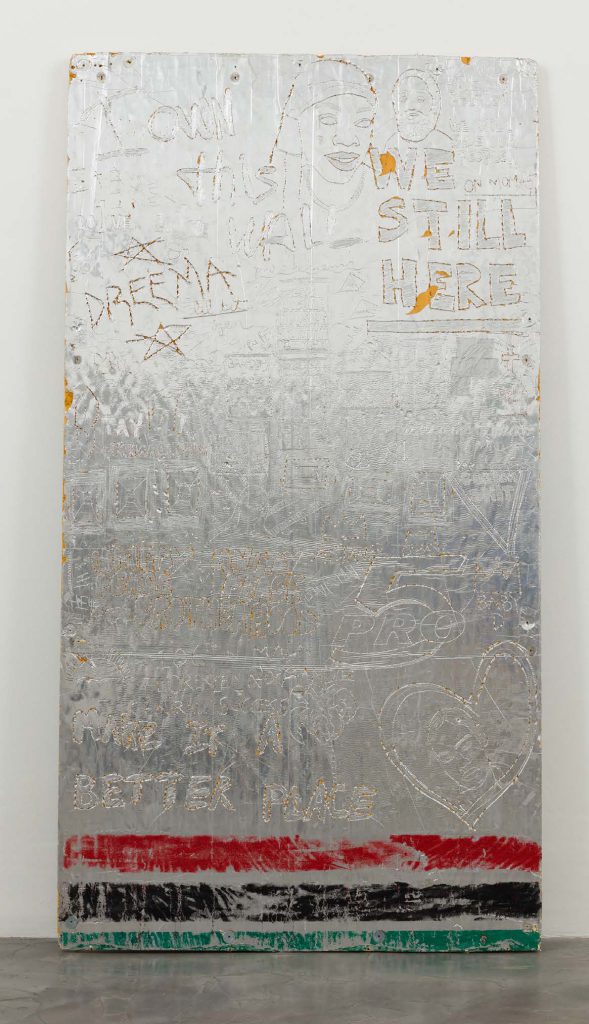
Lauren Halsey, og marvelous marv / lil bit / keep it clean, 2016. Foam and glitter, 96 x 48 inches.
In the main gallery Lauren Halsey’s silver canvas’s og marvelous marv / lil bit / keep it clean (2016) leans and glints against the wall. Consisting of two large rectangular pieces of foam wrapped in aluminum and masterfully etched, Halsey engraves figures with durags and headscarves—those that grace the packaging of black beauty supplies—next to phrases “WE STILL HERE,” and “THEY KILLING US.” There is a string of graffiti tags and advertisements for low-income housing, along with a series of faces captured in the outline of a heart and the repetition of “Together We Can” in distinct squares, likening the phrase to the signs of protesters. The shimmering foil is lined with red, black, and green stripes gesturing towards the colors of black liberation (Universal Negro Improvement Association and David Hammons’s African American Flag) in urban America. Halsey gives us visions of blackness and black life, moments of the everyday in which protest, aesthetics, and ruminations on love are a shimmering pillar.
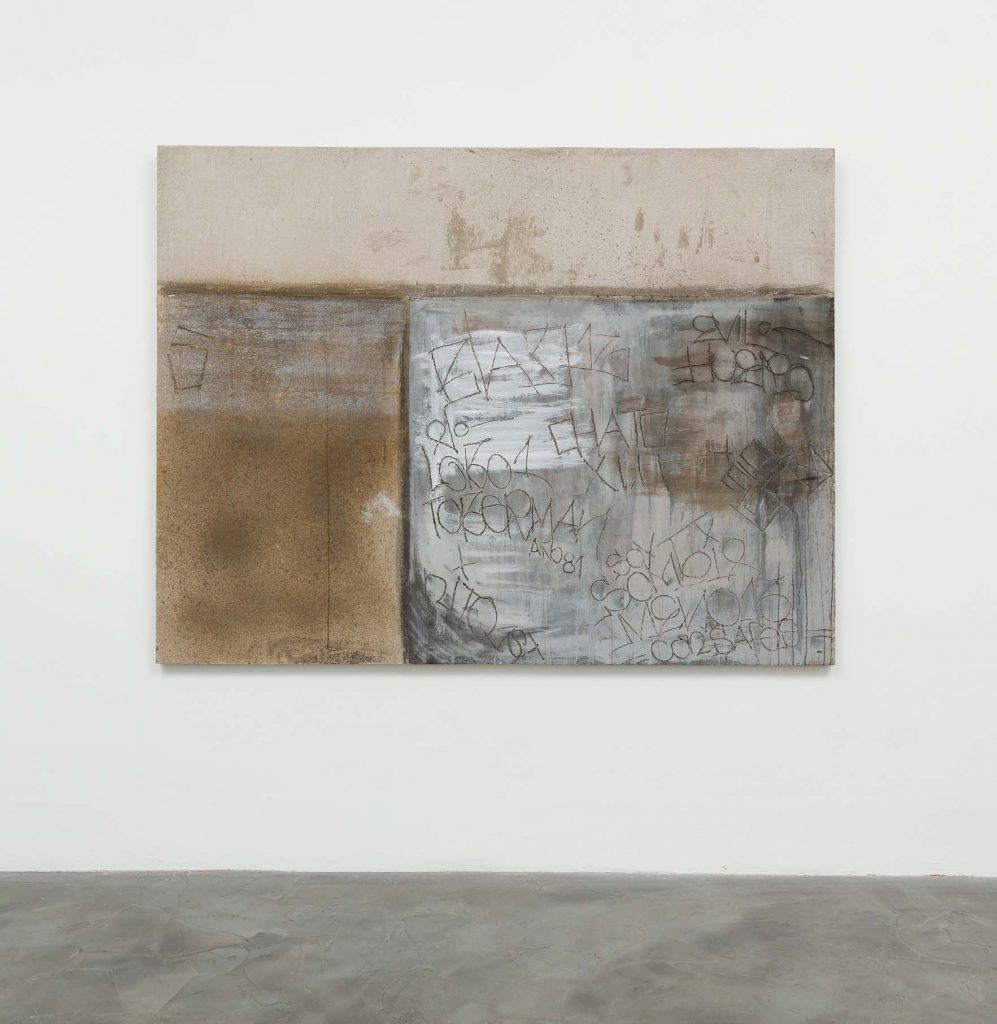
Joe “Prime” Reza, Toberman, 2015. Cement on wood panel, 64 x 84 inches.
Across from Hasley is Joe “Prime” Reza’s Toberman (2015). Using cement laid on wood, “Prime” carves tags throughout the piece, which pay homage and bind a history of the Pico/Union neighborhood, where he is from. As if the material was recently wet, as if we were treading along a sidewalk, as if Toberman and its old school residents were eternal, Reza fashions a type of permanence via malleability. There’s a sentiment that builds between Reza and Halsey, one that acts as a symphonic call and response. Los Angeles belongs to the many, to the brown and black populations that have and continue to find home in the metroscape.
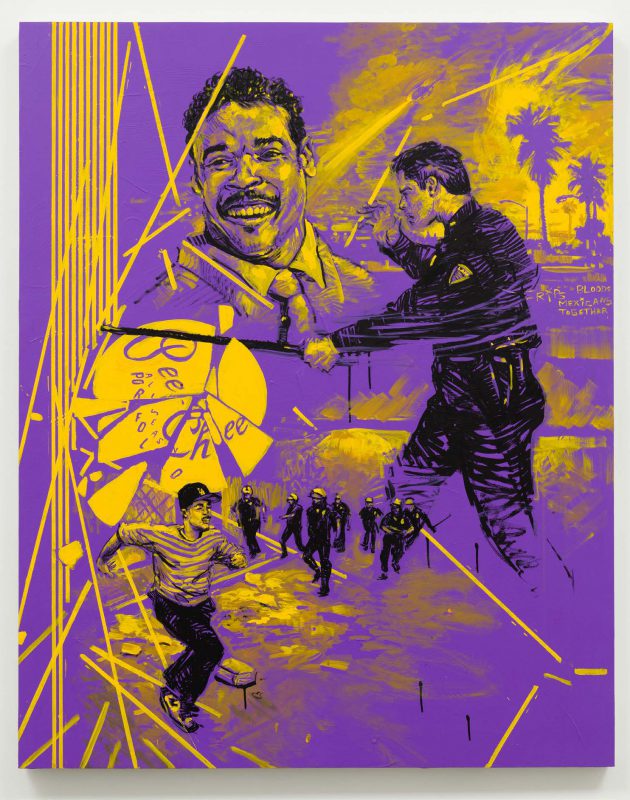
Patrick Martinez, nine deuce, 2016. Acrylic on panel, 60 x 47.5 inches.
Downstairs, Martinez’s prodigious nine deuce (2016), made as a canvassed “Pee Chee” folder, illustrates the beating of Rodney King by white police officers and the resulting rebellion. The sheer immensity of the piece with its purple background and yellow line work invite a type of entrancement which, in turn, forces a reckoning of the past as a future present. A folder that signifies youth and the portrait of King that echoes centuries of brutality are like a nostalgic seduction in tension with the mnemonic horror of South Central 1992.
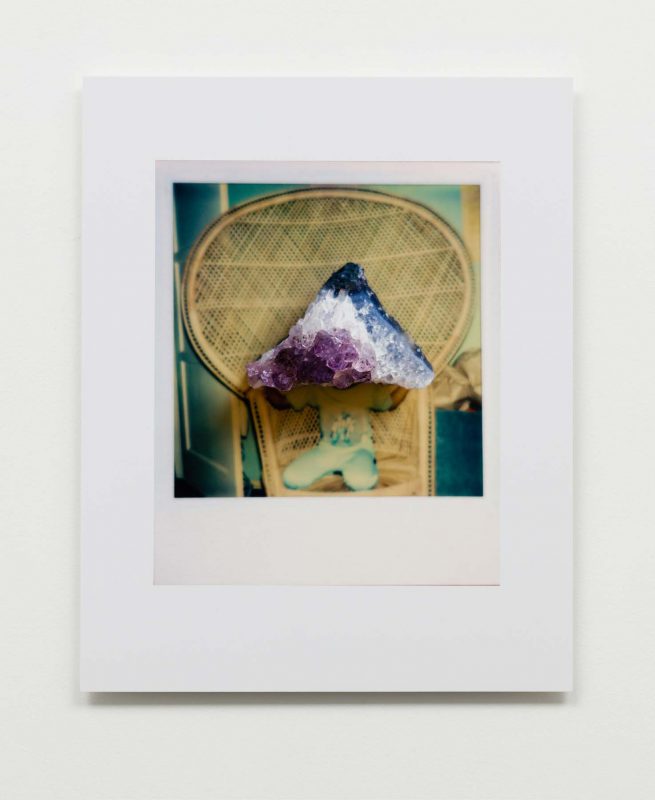
Sadie Barnette, Untitled (Gem), 2015. C-print, 30 x 24 inches.
Sadie Barnette offers a psychic vision of childhood in her photograph Untitled (Gem), (2015). A child sits with legs under on a wicker chair—the one made infamous by Huey P Newton—with a gem, an amethyst specifically, situated in place of the figure’s head. The photograph is slightly blurred in relation to the sharp lines of the amethyst, which hovers lightly in the child’s hands. The gemstone is figured here as a cerebral treasure in which this youth of color is the arbiter of its cognitive capacity.
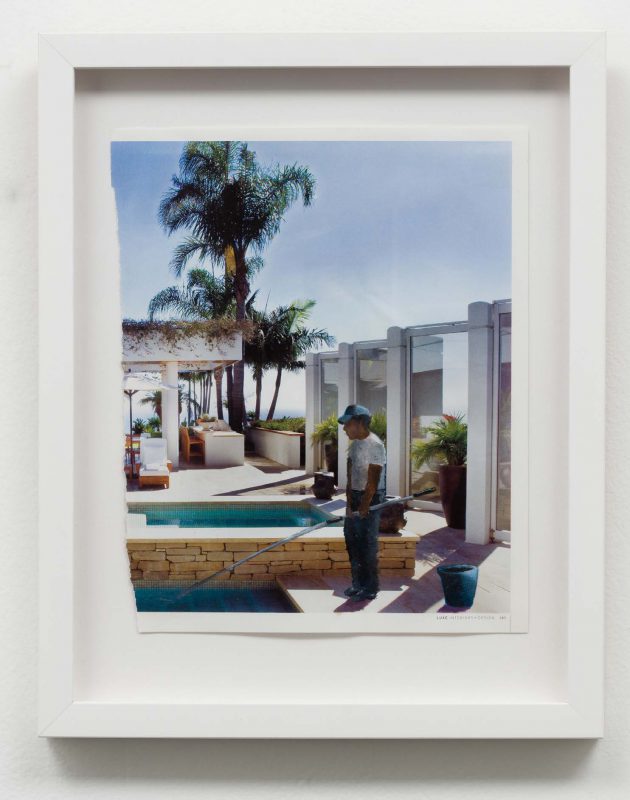
Ramiro Gomez, This Is Not Your Pool, 2013. Acrylic on magazine, 11 x 8.5 inches.
Ramiro Gomez’s This Is Not Your Pool (2013) and Kenturah Davis’s Nkechi, from Infinity Series (2016) and K, From Infinity Series (both 2016) figure brown and black subjects as textual renderings. Gomez places a pool cleaner as the only subject in the image of an affluent home scene. A refusal of laborers’ erasure within the maintenance of wealth, Gomez dutifully paints the indispensable brown latinx bodies which sustain place. Davis’s pieces use the phrase “I lived to be infinity” to structure images of black subjects. The phrase “I lived to be infinity” which is legible in moments and fully concealed in others pivots the subject of the series as a liminal figure. Her use of text as the materiality in which black bodies come into being weds language as a tangible structure to blackness as a process of becoming. Both projects work as portraiture of another kind, assessing the vitality of people of color within the quotidian.
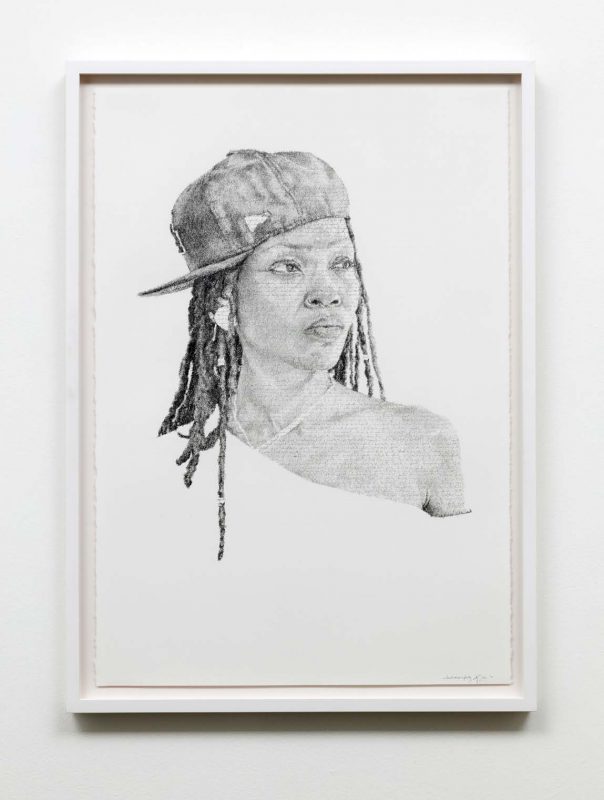
Kenturah Davis, Nkechi, from Infinity Series, 2016. Hand-written graphite text on paper, 38 x 26¼ inches.
Charlie James Gallery is graced with the notion that Los Angeles as a subject is a query of many centers and thus takes a look eastward and southward to render its image.
Southland runs until August 27th. Go.
